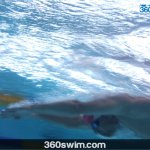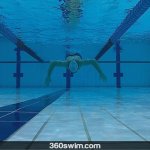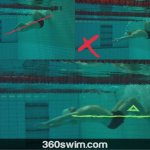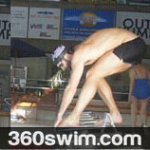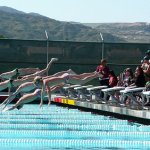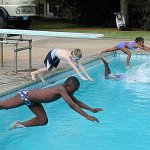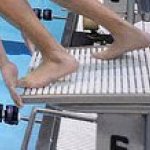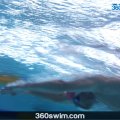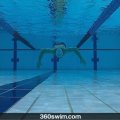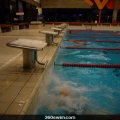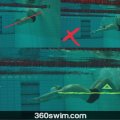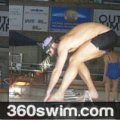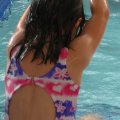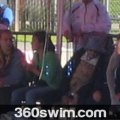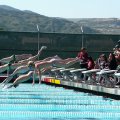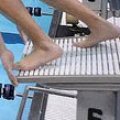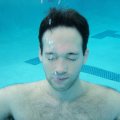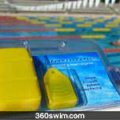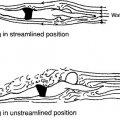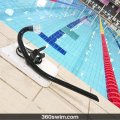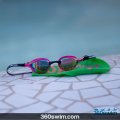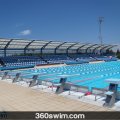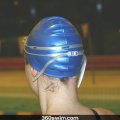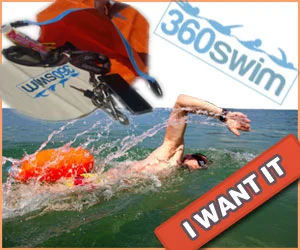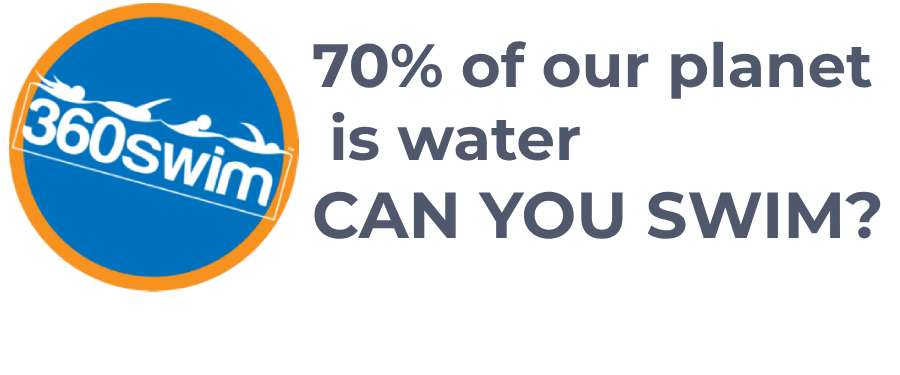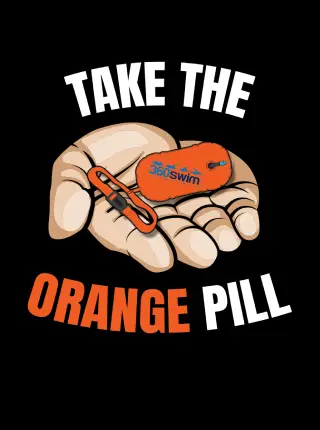AN ADVANCED GUIDE TO THE TRACK START: FINDING YOUR EXPLOSIVE EDGE
If you've already mastered the basics of a good start, it's time to experiment. Without trying new things and fine-tuning the details, you will never improve.
With that in mind, let’s examine the key aspects of the track start. This article assumes you are a competitive swimmer looking to build on your existing knowledge and find the explosive edge that will give you a head start in your race.
Dive Into: Fine-Tuning Your Track Start
- Part 1: The Stance (Weight Distribution)
- Part 2: The Take-Off (The Arm Pull)
- Part 3: The Trajectory (The Jump)
- Part 4: The Entry (The "No Splash" Goal)
- Frequently Asked Questions
Part 1: The Stance (Weight Distribution)
The first key part of the start is the stance you assume on the block. Your body should not feel tense, so some hamstring flexibility is helpful.
Foot Position: How far apart you put your feet is a matter of personal preference, so play with it. Start with about a foot apart and adjust from there.
Head Position: Your head should be down, with your eyes watching the toes of your front foot.
Grip: Make sure you have a solid grip on the block with both your hands and feet. If the blocks are slippery, don't be afraid to wipe them (and the soles of your feet) with a towel. When you grab the block, forget about pointing your elbows out to the sides. Just grab it hard and prepare to pull.
Weight Distribution: The most important variable to experiment with is your weight distribution.
- Forward-Weighted: Lean forward, putting most of your weight on your front foot. This allows you to explode forward instantly.
- Rear-Weighted (Slingshot): Keep your weight on your back foot until the "take your marks" command, then shift forward. This may be slower, but it can generate a more powerful dive.
I suggest you try all of these scenarios to see what works best for you.
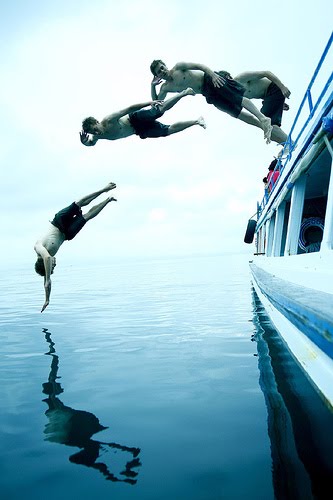
Part 2: The Take-Off (The Arm Pull)
This is hard to believe for most swimmers, but your arms play a critical role in getting off the block as fast as possible.
Your first motion after the starting gun sounds should be to pull on the block with your hands as if you want to rip it off the ground. This explosive pull gets your hips moving forward while keeping your body low. If you watch elite sprinters, you can even see the starting block move from the force of this motion.
Part 3: The Trajectory (The Jump)
Think of the jump as a forward-facing, horizontal motion. All your power should be directed onward, not upward.
The sequence goes like this:
- The starting gun goes off.
- You pull on the block, which drives your hips forward.
- Your back leg drives up and back as it leaves the block, helping to set your entry angle.
- As your front foot finishes the push, your arms swing forward into a streamline, creating momentum for a clean entry.
🎥 Watch: Slingshot Start Analysis
Part 4: The Entry (The "No Splash" Goal)
You have only a split second to get your body aligned into a tight streamline. As we've discussed, the goal is to enter the water like a javelin.
Another analogy is skipping a smooth rock across the water; you want the entry to be as clean as possible. A small splash equals a perfectly angled, streamlined entry.
Some swimmers bend at the hip (pike) and then kick their legs out just before they enter the water. In my opinion, this is bogus. This maneuver disrupts your forward momentum and often results in two splashes: a small one from your upper body and a huge one from your legs entering late.
The goal is to hit the water as a single, rigid, streamlined unit.
I hope this helps in your path to a perfect track start. Happy diving!
Frequently Asked Questions
What is the key to a powerful track start?
Power comes from experimentation and finding what works for your body. The key elements to focus on are your weight distribution on the block, the explosive arm pull that initiates the movement, and the forward-driving trajectory of your jump.
Should my weight be on my front or back foot in a track start?
There are two main styles: the 'forward-weighted' start, which is quicker, and the 'rear-weighted' or 'slingshot' start, which is often more powerful. You should experiment with both to see which style gives you a better result.
How important are the arms in a track start?
They are critically important. The very first motion after the 'go' signal should be an aggressive pull on the block with your hands. This yanks your hips forward, loads your legs, and creates the initial momentum for an explosive start.
What is the correct trajectory for the jump?
Think of it as a forward, horizontal motion, not an upward one. Your goal is to drive your power out toward the water, staying as low and flat as possible to create a clean, fast entry.
Should I bend or 'pike' my body in the air?
No. While some swimmers do this, it is often inefficient. A sudden pike or kick can disrupt your body's forward momentum and lead to a messy entry with a large second splash from your legs. The goal is to hit the water in a single, rigid streamline.
 LNURL1DP68GURN8GHJ7URP0YHRXD3SWDMKJMFWVDHK6TMVDE6HYMRS9A4HSCNCWFXSH3NN0H
LNURL1DP68GURN8GHJ7URP0YHRXD3SWDMKJMFWVDHK6TMVDE6HYMRS9A4HSCNCWFXSH3NN0H